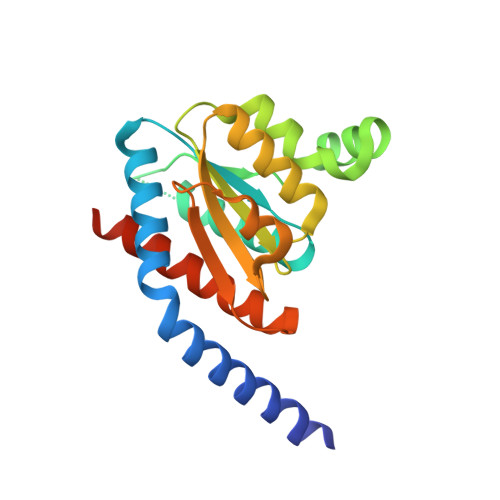Functional and structural studies on the Neisseria gonorrhoeae GmhA, the first enzyme in the glycero-manno-heptose biosynthesis pathways, demonstrate a critical role in lipooligosaccharide synthesis and gonococcal viability.
Wierzbicki, I.H., Zielke, R.A., Korotkov, K.V., Sikora, A.E.(2017) Microbiologyopen 6
- PubMed: 28063198
- DOI: https://doi.org/10.1002/mbo3.432
- Primary Citation of Related Structures:
5I01 - PubMed Abstract:
Sedoheptulose-7-phosphate isomerase, GmhA, is the first enzyme in the biosynthesis of nucleotide-activated-glycero-manno-heptoses and an attractive, yet underexploited, target for development of broad-spectrum antibiotics. We demonstrated that GmhA homologs in Neisseria gonorrhoeae and N. meningitidis (hereafter called GmhA GC and GmhA NM , respectively) were interchangeable proteins essential for lipooligosaccharide (LOS) synthesis, and their depletion had adverse effects on neisserial viability. In contrast, the Escherichia coli ortholog failed to complement GmhA GC depletion. Furthermore, we showed that GmhA GC is a cytoplasmic enzyme with induced expression at mid-logarithmic phase, upon iron deprivation and anaerobiosis, and conserved in contemporary gonococcal clinical isolates including the 2016 WHO reference strains. The untagged GmhA GC crystallized as a tetramer in the closed conformation with four zinc ions in the active site, supporting that this is most likely the catalytically active conformation of the enzyme. Finally, site-directed mutagenesis studies showed that the active site residues E65 and H183 were important for LOS synthesis but not for GmhA GC function in bacterial viability. Our studies bring insights into the importance and mechanism of action of GmhA and may ultimately facilitate targeting the enzyme with small molecule inhibitors.
Organizational Affiliation:
Department of Pharmaceutical Sciences, College of Pharmacy, Oregon State University, Corvallis, OR, USA.















